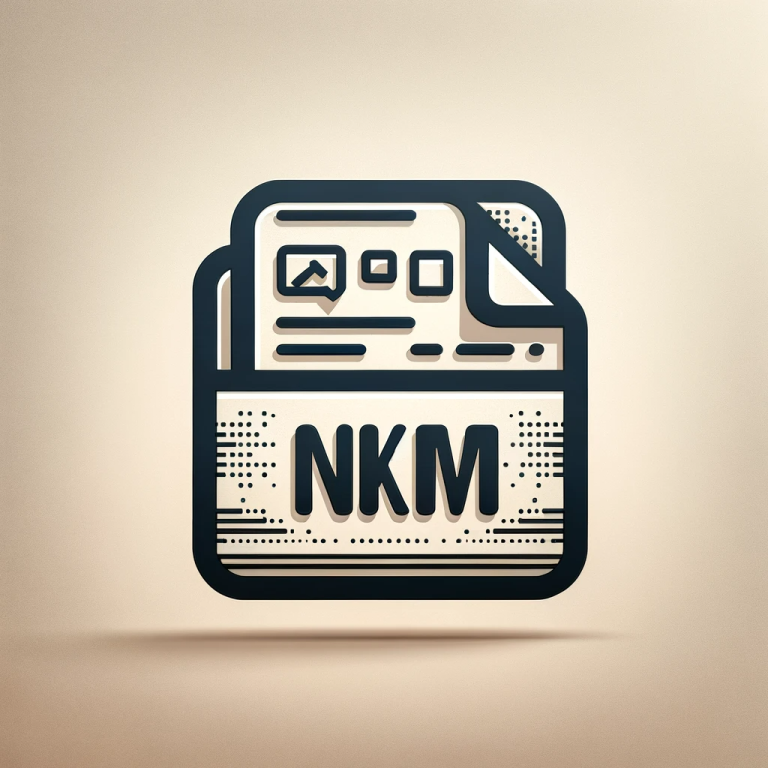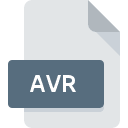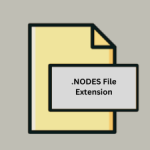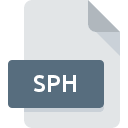.NKM File Extension

Kontakt Multi Instrument File
| Developer | Native Instruments |
| Popularity | |
| Category | Audio Files |
| Format | .NKM |
| Cross Platform | Update Soon |
What is an NKM file?
The .NKM file extension is associated with Kontakt, an industry-standard sampler software from Native Instruments. Kontakt is renowned for its sophisticated sound engine, extensive third-party library support, and intuitive interface.
An .NKM file is essentially a Kontakt Multi Instrument File, which enables users to save and load multiple instruments or patches simultaneously.
This feature is particularly useful for composers and sound designers who require complex setups involving multiple sounds.
More Information.
Initially, the .NKM file was designed to streamline workflow in music production. It allowed users to save their multi-instrument setups, so they could easily recall them for future projects.
This was particularly beneficial in scoring for film and television, where composers could save specific instrument ensembles and reuse them across different cues or projects.
Origin Of This File.
The .NKM file extension originates from the Kontakt software itself. Kontakt was first introduced by Native Instruments in the early 2000s, and it quickly became a staple in digital music production.
The introduction of the .NKM file format was a response to the growing need for more complex and rich soundscapes, allowing users to manage and trigger multiple instruments within a single file.
File Structure Technical Specification.
Technically, an .NKM file is a container. Inside this container, there are references to various individual instrument files (usually .NKI files) along with their specific settings like volume, pan, effects, and performance parameters.
It stores the information about how these instruments are interconnected and how they interact with each other. This structure allows for high levels of customization and complexity in sound design.
How to Convert the File?
Converting .NKM files (Kontakt Multi Instrument Files) involves a few steps since these files are proprietary to the Kontakt software and are not directly supported by many other platforms.
The conversion process typically involves extracting individual elements from the .NKM file and saving them in a universal format. Here’s a step-by-step guide on how to convert .NKM files:
1. Open the .NKM File in Kontakt:
First, you need to access the content of the .NKM file. This is done by opening the file in Kontakt, which is the native software for such files.
- Launch Kontakt.
- Navigate to the location of your .NKM file using the file browser within Kontakt.
- Load the .NKM file by double-clicking it.
2. Extract Individual Instruments:
An .NKM file contains multiple instruments or patches. You need to save these individually if you want to use them outside of Kontakt.
- Inside Kontakt, view the list of instruments loaded with the .NKM file.
- Save each instrument individually by selecting the instrument and choosing the “Save As” option, saving them as .NKI files (Kontakt Instrument Files) if you want to retain the instrument settings.
3. Convert .NKI Files to Universal Formats (Optional):
If you aim to use the sounds outside of Kontakt, you might need to convert the .NKI files into a more universal format like .WAV or .AIFF.
- Load each .NKI file individually in Kontakt.
- For each instrument, set up the desired output settings (volume, effects, etc.).
- Use Kontakt’s built-in recording or ‘render’ function to export the sound of each instrument to .WAV or .AIFF files.
4. Using a Third-party Software (Optional):
If the manual process is too cumbersome, some third-party software or scripts claim to automate parts of this process. The effectiveness and legality of these tools can vary, so it’s essential to research and ensure you’re using a legitimate and safe tool.
5. Importing to Other Software:
Once you have the individual sounds saved in a universal format like .WAV or .AIFF, you can import these files into virtually any DAW (Digital Audio Workstation) or sampler software.
- Open your DAW or sampler software.
- Import the .WAV or .AIFF files.
- Depending on the software, you might need to manually recreate certain settings or mappings that were inherent to the .NKM file.
Advantages And Disadvantages.
Advantage:
- Efficiency in Workflow: .NKM files allow for the quick loading of complex setups, significantly speeding up the workflow in music production.
- Resource Management: By handling multiple instruments in a single file, it reduces the load on the system’s CPU and memory resources.
- Consistency in Projects: Ensures consistency in sound across different projects by allowing users to reuse setups.
Disadvantage:
- Dependency on Kontakt: .NKM files are proprietary to the Kontakt software, meaning they can’t be used natively with other software without conversion or a compatible plugin.
- Complexity: For beginners, the complexity of managing multiple instruments within a single file can be overwhelming.
How to Open NKM?
Open In Windows
- Install Kontakt: Download and install the latest version of Kontakt or the free Kontakt Player from Native Instruments.
- Open the File: After installation, you can double-click the .NKM file to open it directly if Kontakt is set as the default program for .NKM files. Alternatively, you can open Kontakt and use its file browser to locate and open your .NKM file.
Open In Linux
- Use Wine: Kontakt is not natively available for Linux, but you can use Wine, a compatibility layer capable of running Windows applications on Linux.
- Install Kontakt via Wine: Install Wine on your Linux system, then download and run the Kontakt installer through Wine.
- Open the File: After installing Kontakt via Wine, you can run Kontakt through Wine and use it to open .NKM files.
Open In MAC
- Install Kontakt: Download and install the latest version of Kontakt or the free Kontakt Player from Native Instruments.
- Open the File: Similar to Windows, you can double-click the .NKM file to open it if Kontakt is set as the default program for .NKM files, or you can open Kontakt and navigate to the file within its browser.
Open In Android
- Convert the Sounds on a Computer: Use Kontakt on a computer to load your .NKM file. Export each instrument or sound in the .NKM file as individual audio files (e.g., .WAV or .AIFF).
- Transfer the Audio Files to Your Android Device: Connect your Android device to the computer via USB. Copy the audio files to your device’s storage.
- Play or Use the Audio Files on Your Android Device: Use any standard audio player on Android to play the .WAV or .AIFF files. For more advanced usage (like editing or integrating with projects), use a DAW or sampler app that is compatible with Android (e.g., FL Studio Mobile, Caustic 3, n-Track Studio).
Open In IOS
- Convert the Sounds on a Computer: Use Kontakt on a computer to load the .NKM file. Export each instrument or sound in the .NKM file as individual audio files (e.g., .WAV or .AIFF).
- Transfer the Audio Files to Your iOS Device: Use iTunes or a cloud service like iCloud Drive, Dropbox, or Google Drive to transfer the audio files to your iOS device.
- Play or Use the Audio Files on Your iOS Device: Use the ‘Files’ app or any standard audio player on iOS to play the .WAV or .AIFF files. For more advanced usage (like editing or integrating with projects), use a DAW or sampler app compatible with iOS (e.g., GarageBand, Cubasis, BeatMaker).
Open in Others
- For other operating systems or platforms not commonly used (like certain Linux distributions or specialized OS), the process would be similar to that of Linux, using compatibility layers or emulators if available. Support and performance might not be optimal, and extensive tweaking and testing might be required.
- If you’re dealing with a non-standard operating system, consider converting the .NKM contents to a more universally accepted format like .WAV or .AIFF for broader compatibility.













